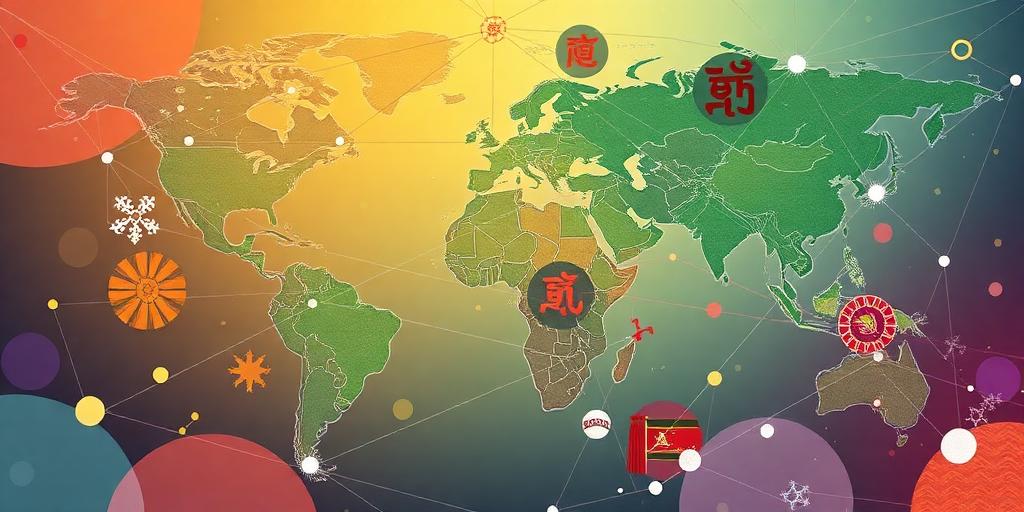The Pervasive Influence: Understanding Globalization's Impact on Local Traditions
Globalization, a multifaceted process characterized by increasing interconnectedness and interdependence among nations, has profoundly reshaped the contemporary world. While often lauded for fostering economic growth and technological advancement, its pervasive influence extends significantly into the realm of culture, fundamentally altering the fabric of local traditions. This analysis will delineate the complex ways in which globalization challenges, transforms, and, in some instances, paradoxically strengthens local cultural heritage, focusing on the broader globalization impact on local traditions.
The Erosion of Distinctiveness: Homogenization and Cultural Loss
One of the most widely recognized impacts of globalization is the potential for cultural homogenization. The global dissemination of popular culture, consumer goods, and standardized practices often marginalizes indigenous forms of expression. This phenomenon can manifest in the decline of local languages, the abandonment of traditional crafts, or the substitution of unique culinary practices with globally branded alternatives. The economic efficiency driven by globalization frequently favors large-scale, standardized production, placing immense pressure on smaller, locally-rooted industries and artistic practices. The imperative to compete on a global scale can inadvertently dilute the very essence that makes a tradition unique, leading to a diminished sense of cultural identity within communities. These represent significant challenges to traditional customs from globalization.
Economic Shifts and Social Dislocation
The economic dimensions of globalization frequently introduce new pressures on local traditions. The influx of foreign goods and services can undermine local economies reliant on traditional production methods, leading to unemployment or the forced adaptation of livelihoods. Furthermore, increased migration, a direct consequence of global connectivity, can disperse communities, weakening the intergenerational transmission of customs and rituals. This social dislocation often results in a weakening of community bonds, which are crucial for the sustenance of many local practices and oral histories. Understanding the direct economic effects of globalization on local culture is crucial for policymakers and cultural preservationists alike.
Resilience and Reinvention: Adapting to Global Influences
Despite these significant challenges, local traditions are not merely passive recipients of global forces. Many communities demonstrate remarkable resilience, finding innovative ways to adapt, reinvent, and even capitalize on globalization. This often involves a process of cultural hybridity or syncretism, where global elements are selectively integrated and reinterpreted within local frameworks. For instance, traditional music might incorporate modern instruments, or indigenous art forms might find new global markets through digital platforms. This adaptation allows for the continued relevance and evolution of traditions rather than their complete erasure. This highlights the ongoing effort toward cultural preservation in a globalized world.
The Digital Age: New Avenues for Preservation and Dissemination
The advent of digital technologies, a cornerstone of modern globalization, presents a paradoxical opportunity for local traditions. Social media, online archives, and digital storytelling platforms offer unprecedented tools for documenting, sharing, and revitalizing endangered languages, rituals, and practices. Communities can connect globally, finding allies in their efforts to preserve their heritage, while also reaching new audiences who might appreciate or contribute to their cultural sustainability. This dynamic demonstrates how adapting local heritage to global influences can leverage technology for enduring cultural vitality.
Conclusion
The impact of globalization on local traditions is undeniably complex and multifaceted. While the threats of homogenization and cultural erosion are salient, the capacity for adaptation, resilience, and creative reinvention must also be acknowledged. The future of local traditions hinges not on isolation, but on a nuanced engagement with global forces—one that balances economic integration with the conscious safeguarding of distinct cultural identities. The ongoing dialogue between the global and the local will continue to shape the diverse tapestry of human heritage, profoundly influencing globalization and cultural identity for generations to come.









